-
I drink Organic White Tea - it really helps me sleep calmly at night as it has low caffeine
-
I prefer Green Tea - I was told by my yoga teacher that Green Tea is very calming as it also has low caffeine
-
I go for Decaff tea - my friends says this has lowest caffeine amongst all teas
Who is right? And who is wrong?
The question of caffeine content in tea has been one of the most discussed and debated in recent years. Sweeping generalizations, aided by skillful marketing, seem to have created a common consensus among tea drinkers like - White Tea is a low-caff tea but Black Tea has high caffeine.
And there are many more myths and misunderstandings about caffeine in tea.
Join us as we bust these myths by delving deeper into what is caffeine and what effect does it have on the human brain, as we then understand the complex relationship between tea and caffeine.

What Is Caffeine
Simply put, caffeine is a psychoactive compound that acts as a stimulant. Caffeine is naturally found in many plants like tea, coffee and chocolates. Like any stimulant, caffeine relieves fatigue, improves alertness and cognitive abilities and enhances overall performance.
Caffeine Is Bad For Us – Busting The Top Myth!
No. Caffeine is not bad for us – too much caffeine is bad for us.
Moderate intake of caffeine is beneficial to us. Not only does it improve cognition, helps stay alert and relieves fatigue, it is also known to protect against cardio-vascular disorders, Parkinson’s disease and even certain kinds of cancers. But, like everything else, it is when we cross the limit that caffeine starts becoming detrimental, and then dangerous.
According to numerous studies, the generally recommended safe intake of caffeine in adults is between 400-500mg per day. During pregnancy, the prescribed limit is 150-200mg. It is not recommended in diet for children under four years of age. However, please remember that each one of us has a different metabolism rate, and how one person’s system processes caffeine is different to another.
When the intake of caffeine doubles to around 1000mg per day on a regular basis, it starts to have a detrimental effect on health. And it is when intake becomes ten-fold, that caffeine becomes dangerous to the human body.
Caffeine In Tea

The tea plant produces caffeine as a natural defense to ward off insects and pests. The highest concentration of caffeine occurs in the youngest tea leaves, typically found at the top of the plant. This is because insects tend to attack young shoots and leaves, which are juicier, compared to leave in the middle and lower part of plants. Generally, as one does down the tea bush, the chemical concentration decreases.
Compared to coffee, tea has significantly less caffeine. While one shot of espresso has 80 mg of caffeine and one cup of coffee has 120 mg of caffeine, a cup of tea has between 10-60mg of caffeine. The wide variance in caffeine content in tea – from 10-60mg, is because the caffeine content in tea depends on multiple factors like the season of plucking, the type of tea bush, the kind of leaves plucked and the variety of cultivar of the tea plant. And this is why, there can and should never be sweeping generalizations about caffeine in tea. Generalizations give way to myths, and it is time to bust these myths!
#1 Both Tea And Coffee Have Caffeine…And Similar Effects

Agreed - both tea and coffee have caffeine.
But unlike coffee, the health benefits of tea are also significantly more. antioxidants, polyphenols and the amino acid - L-Theanine. High levels of antioxidants and polyphenols slow down the absorption of caffeine in the body. Also, the L-Theanine is proven to activate alpha brain waves, connected with a relaxed state of mind.
So, while coffee and tea both have caffeine, the synergy of L-Theanine and antioxidants with caffeine in tea creates a mindful alertness for a longer time, while coffee creates a short burst of energy, followed by a lull and craving for more!
The synergistic combination with L-Theanine brings out the best of caffeine - resulting in a state of mindful and meditative state of alertness. This is why in ancient times, tea was the only drink permitted for meditating monks, as it allowed them to remain mindfully alert.
#2 White Tea And Green Tea Have Less Caffeine Than Black Tea
All teas are made from the leaves of the same plant - Camellia Sinensis. White Tea, Green Teas, Oolong Teas, and Black teas are a result of the processing of tea leaves, specifically, a stage in processing known as oxidation. White and Green teas are not oxidised, while Oolong teas are partly oxidised and Black Teas are fully oxidised. Read all about how White teas is one of the healthiest cup for you here.
Processing has nothing to do with caffeine content and has no impact on the caffeine in the tea leaves. In fact, it is possible to have White Tea and Green Tea with higher caffeine content than Black Tea!
#3 Caffeine In Tea Causes Dehydration Like Coffee
Caffeine is a diuretic. But unlike in a cup coffee where 10 gms of coffee powder are used, a cup of tea is made with only 2 gms of tea leaves. Also, tea has higher content of water than coffee. And, the antioxidants in tea ensure caffeine is absorbed slowly and over longer period of time, almost like a time-lapse. Tea, therefore, is only mildly diuretic and does not cause dehydration like coffee, but is actually a very good hydrating drink.
# 4 All Teas Have Same Caffeine Content

Not really. Teas are grown in a variety of countries, regions, elevations and climates using different types of tea bushes. The caffeine content in each of these tea changes depending on whether the leaves are new or old, whether the elevation is high or low, whether the bush is seed-grown or clonal and whether the weather is spring or summer!
Based on where and how they are grown, the best we should do is to classify popular teas as either High Caffeine Teas or Low Caffeine Teas. Here is quick-and-easy reference table :
|
Relatively Low Caffeine
|
Relatively High Caffeine
|
# 5 Tea Bags Have Lesser Caffeine Than Loose Tea

Generally speaking, it is the other way around : tea bags, particularly the non-pyramid tea-bags, have a higher caffeine content. This is because these tea-bags contain finer grades of tea like fanning and dust, which give out infusion quickly. Loose leaf teas, on the other hand, infuse slowly, and give you a higher degree of control on brewing. You can do a quick brewing of loose leaf, say 2 minutes, to make a cup of tea with lesser caffeine. In case of tea-bags, even in 1 minute, all the caffeine would be extracted.
# 6 Decaffeinated Teas Are Caffeine Free
This is another of those popular myths propagated by shrewd marketeers. Decaffeination is an industrial process where a solvent is used. What the process does is it strips the caffeine molecules. But in doing so, a lot of the goodness of tea - the antioxidants and the flavor is also removed. A classic case of throwing the baby out with the bathwater! And even after the decaffeination process is over, the tea is still not 100% caffeine free - it has about 5-10mg of caffeine per cup!
# 7 Washing A Tea Can Make It Decaffeinated
‘Washing’ means steeping the tea for a quick 30 seconds and throwing out the liquid. Many people believe that washing will get rid of the caffeine in tea, and thus, the next cups you brew will be caffeine free!
The truth is totally different. Caffeine in loose leaf tea is extracted slowly. It takes about five minutes for all the caffeine, antioxidants and flavors to come out. The first washing of 30 seconds will only extract about 10-20% of caffeine, but worse, when you throw away this liquid, you will also be throwing away the goodness of tea! To completely extract the last bit of caffeine, you will need to steep the tea for 13-15 minutes, and then throw out the liquid. But by then, nothing is left is tea : no flavour, no taste, no antioxidants, no polyphenols…nothing!
Other Factors That Impact Caffeine in Tea 
Season
Because caffeine is produced by the tea plants as a defence mechanism against insects and pests, the quantity of caffeine in tea leaves increases during summer. This is to ward off the higher incidence of pest and insect attacks during summer, which are relatively higher than, say in spring our autumn. What this means for the caffeine conscious tea drinker is that a spring tea will have relatively less caffeine than a summer tea.
Top Leaves Versus Lower Leaves

The concentration of caffeine and other chemical compounds is higher in the top leaves and buds, and reduces as one goes lower. This is due to the fact that insects and pests tend to attack the top level leaves more as they contain more ‘ juices’. As one goes lower down, the leaves become less ‘juicy’ and are not attacked as much. Hence, the amount of caffeine in lower leaves is lesser compared to top leaves. This means that teas like Oolong Tea which are generally manufactured from middle section of the tea bushes, will have lower caffeine content.
Plant Cultivar
There are two kinds of tea plants : Camellia Sinensis Sinensis (China) and Camellia Sinensis Assamica (Assam). The Chinese tea plants have been cultivated for over five centuries. The Assam tea bushes grew wildly in the jungles of Assam before being discovered by the East India Company in 1823.
The Assam tea plants have higher caffeine content compared to the Chinese tea plants. This is perhaps the reason why the Assam tea bushes could survive the harsh and hostile conditions of tropical rainforest, but the Chinese bushes perished when they were planted in Assam.
Also, it has been found that tea bushes planted using the cloning method ( which give us Clonal Teas) have a higher content of caffeine than seed grown tea bushes.
Growing Conditions
Shade grown teas like Gyokuro and Matcha Tea tend to have higher caffeine compared to teas grown in sunshine. But shade grown teas also have a higher concentration of amino acids that have been linked to the generation of alpha brain waves that result in a relaxed state of mind. The higher caffeine is balanced by higher amino acids.
Steeping Process

This is where you can control the caffeine in your tea. Here are simple things you should keep in mind :
-
Use Loose Leaf Teas
It takes around 4-5 minutes for the caffeine and other compounds from loose tea to be get completely extracted during steeping. In case of non-pyramid tea-bags, which are generally made using finer grades, the infusion comes out almost instantly, giving you no chance of control the caffeine.
-
Steeping Temperature
The higher the temperature of the water, the higher will be the caffeine extracted. This is one big reason why green teas are recommended for low-caffeine teas as they are steeped at lower temperatures. The only exception is Matcha Tea, which is the only completely soluble natural green tea, and all the goodness is imbibed.
So, The Final Question…
What is the best low-caffeine tea?
The answer is choosing the correct tea and steeping it correctly :
-
Select a tea that is produced during the Spring season
-
Use loose-leaf tea
-
Go for Oolong tea
-
Use a bit lesser leaf than recommended
-
Steep the tea at lower temperature than recommended
-
Steep for lesser time than recommended
This would make a weaker cup of tea, but at least ensure that a much lower caffeine tea is enjoyed.
But Also Remember…
Caffeine content is tea is a very complex subject. There has been a lot of scientific research on the topic, which continues to fascinate herbalists and researchers. As more and more studies are conducted, new facts get discovered. As a complicated and continuously evolving field, we have tried to synthesize the latest findings and present it in simple and easy terms for every tea lover. In case you have anything new or different to add, please do reach out us and we shall update this.
UNLOCK AN OFFER FOR YOU!
Subscribe to our newsletter & stay updated! What's more - A SPECIAL DISCOUNT ONLY FOR YOU!
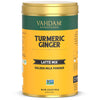
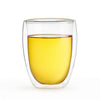
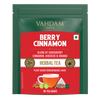
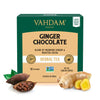
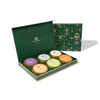
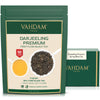
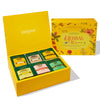


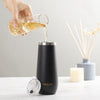
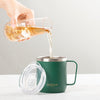
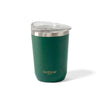
 INR ₹
INR ₹